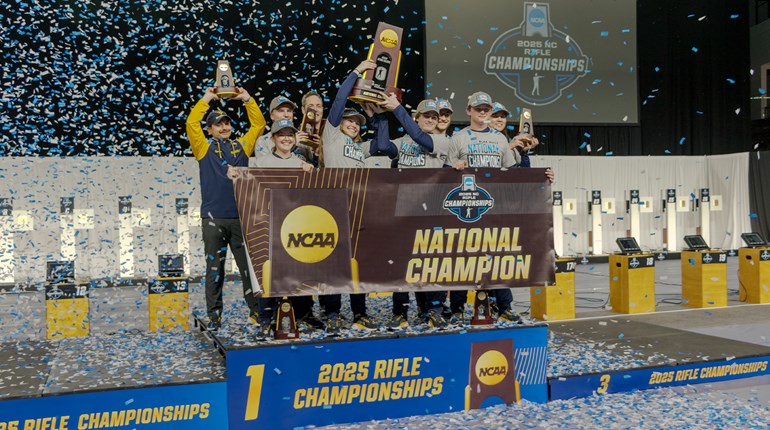
Above: An example of a Smallbore F-Class Rifle. Photo by Jim Evenson.
The National Rifle Association Board of Directors has approved a Smallbore Rifle F-Class National Championship. This new event will be conducted concurrently with the 2018 NRA National Smallbore Rifle Championships, at the Wa-Ke'De Rifle Range in Bristol, IN.
F-Class is the brain child of the late Canadian rifleman George “Farky” Farquharson, for whom the discipline is named. Farquharson developed the sport in the early 1990s as an outlet for high power shooters, “of a certain age,” who were facing the challenges of diminished eyesight, reflexes, and strength in sling shooting, yet wished to continue competing. Farquharson’s idea was to use scopes and bipods to shoot at a smaller target than the sling shooters at long range. F-Class has caught on with multiple segments of the shooting community, and it is growing rapidly as a shooting discipline.
Details of the new national championship are being finalized, but here’s the general concept: there will be several daily aggregates of 40 shots each at 50 yards, and a Dewar course of fire―20 shots at 50 yards and 20 at 100 yards. The target will be the NRA A-50/A-51 at short range, and the NRA A-33 at 100 yards. The specifics of the match such as rifle requirements, rests, and sights may be found in the Provisional Smallbore Rifle F-Class Rules (Section 23), found on page 65 of the current NRA Smallbore Rifle rulebook. Any rules not covered in Section 23 will be referred to in the normal rules of Sections 1 through 22.
NRA Board Member Howard J. “Walt” Walter shared more details about the equipment needed to participate in the new championship.
“No elaborate equipment is needed for competition―any rifle chambered for .22LR, with either metallic or telescopic sights mounted, and a bipod will work fine. A shooting mat and a spotting scope rounds out the basic equipment that’s needed. If you have been shooting smallbore rifle for any time, you probably already have all the equipment that you need to be competitive.”
Walter added, “While equipment is important, the real test will be a shooter’s ability to read the wind and keep up with the changes before pulling the trigger.”
A match program will be available in the spring. Be sure to check back with SSUSA.org often for the latest updates.


































